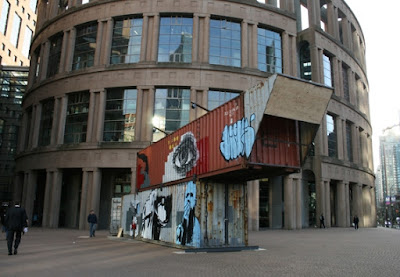1. Be sure to use the right business model
Crowdsourcing is not a process that's taking place in an isolated cocoon; it's a mixture of different approaches coming from a crowd of diverse people: your company's employees, its partners, the customers, and even competitors. Reflect a moment on the impact this can have on your current business model. Should it be adjusted in order to function with the crowd? Because the things you need from the crowd – ideas, something solved, or funds - determine which model is the best fit for your business.
2. Be sure you turn to the right crowd with your challenge
Different problems and objectives call for different crowds. There is no ‘one size fits all’ approach. Flexibility to apply different methods of crowdsourcing for different goals is essential to successful crowdsourcing: it's obvious that a crowd focusing on decisions and creation need more expertise than a filtering or funding crowd. The basic rule of thumb is the crowd members should at least be somewhat knowledgeable about and interested in the topic of the challenge.
3. Make sure the crowds are big enough
Next to a "credible mass" (see principle 2), there's a ‘critical mass’ needed. Although it's very important to source the right people rather than just the most people, it's obvious that results obtained through assessments and discussions by a large group of diverse and qualified people are more representative than those obtained by a small crowd. You want numbers? There are still different opinions on that. I've read 5000 people are a decent crowd, but we have been successful with crowds below 500. It actually depends on the average level of activity or engagement you reach. An intuitive and user-friendly tool is essential, and good community management can make a huge difference.
4. Be sure your employees support the crowd-principle
Get them on board and stimulate them to spread the word. Use different means to promote your challenge, like email promo, blog, twitter, regular PR... Find the right connectors and early adopters and give them easy ways to reach out to their peers and invite them in.
5. Provide guidance (with a gentle hand:)
6. Understand the motivations of your crowd
Have you established a clear reward system (not necessarily financial rewards, but a comprehensive system that encompasses different types of motivation)? The right incentives have been proven to attract and keep participation high.
7. Expect the majority of the contributions to be poor
An adage from Theodore Sturgeon (an American science fiction author) says that "ninety percent of everything is crap". It won't be different with contributions in an innovation management tool. Just keep this in mind and don't be disappointed - the other 10 percent are definitely worth it!
8. Don't demand large chunks of time of your crowd
Keep in mind that spending time in the innovation management tool isn't the main job of your crowd. Think of the spare time the crowd members have - even 30 seconds is useful for someone to vote on an idea. So try to break the tasks and questions down into small call-to-actions. Don't make them go through long complex procedures.
9. Let them express what's valuable and what's not
There is no law that says you have to implement what the crowd decides, but you need to be ready to acknowledge the crowd’s input and broadcast the action you are taking and why.
10. It's a matter of GIVE and take
A fundamental question when building a highly valuable crowd pool is to ask yourself, “What can I do to help the crowd to generate interesting ideas?”
Instead of saying “Who could help me?” or “What can I get from the crowd?”, an Innovation Management Tool is a place to extend your reach by helping others. So reverse your thinking and start thinking about other people first. This will boost both quality and quantity of the contributions!
Read more at
The Jazz of Innovation







